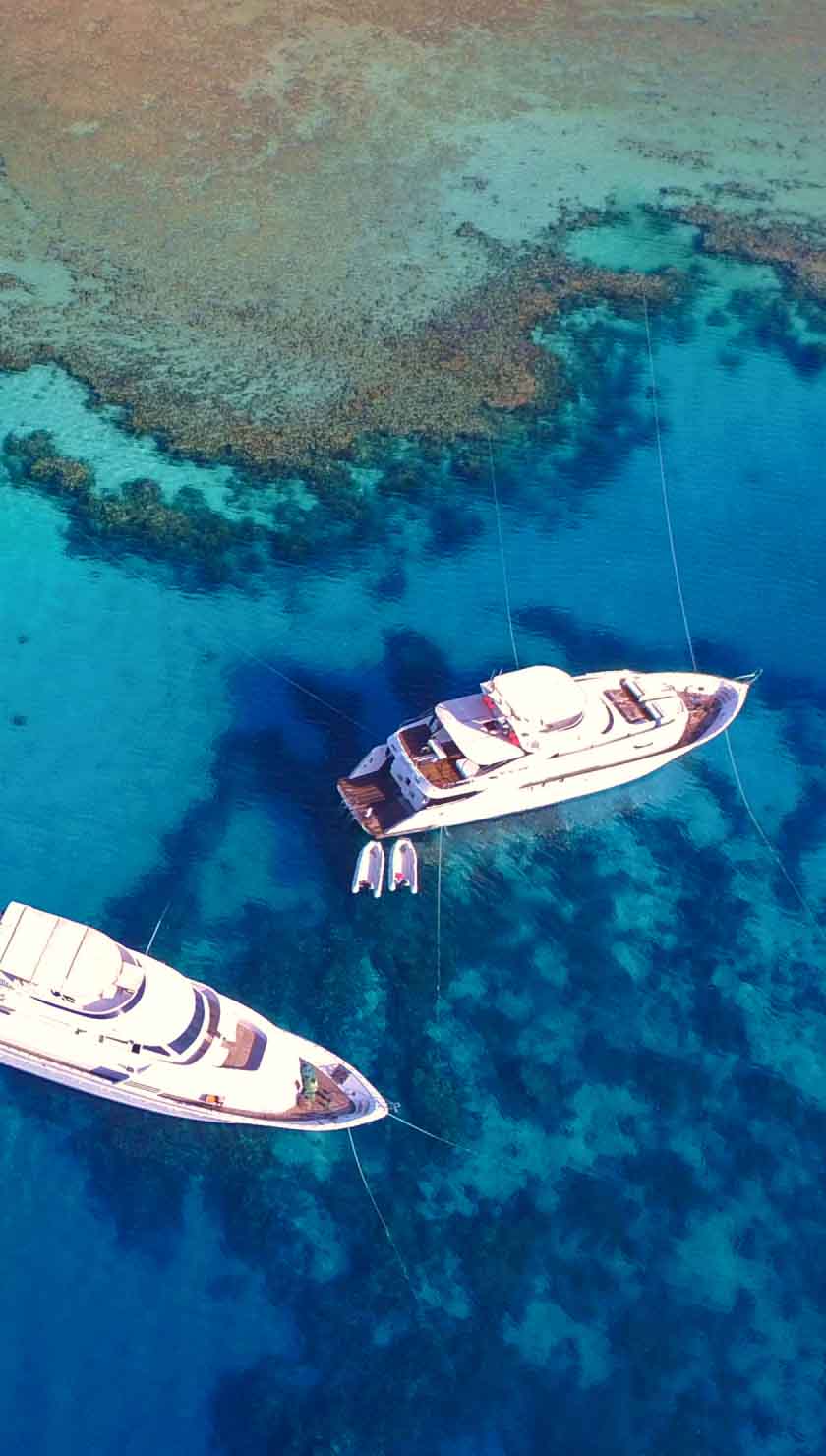Liveaboard Diving in Namena Marine Reserve
WHAT TO EXPECT ON A NAMENA MARINE RESERVE LIVEABOARD
Liveaboards to Namena Marine Reserve will visit one of the best dive sites of Fiji. Located between the main islands Viti Levu and Vanua Levu you'll find this beautiful - 70 square kilometer reef with an incredible marine biodiversity, consisting of both Namena Island and the horse-shoe-shaped barrier reef. Thanks to the chiefs of the region Kubulau, a total ban on fishing was placed in 1997, after an increase in commercial fishing in the 80's and 90's when a serious threat on Namena Reef was foreseen. These days, Namena offers great diving experiences with some of the best liveaboard operations in Fiji.
NAMENA MARINE RESERVE UNDERWATER
Liveaboards to the Namena barrier reef, which stretches a distance of over 16 kilometers, are unprotected in open waters and can't be dived in bad weather. There are often strong currents which result in abundant and active sea life. At Namena Reef you can find more than 400 types of corals, 445 documented marine plants, more than 1000 species of invertebrates and 1100 fish species. Namena is on the migratory pathway of bottlenose and spinner dolphins and humpback whales. In Fiji there are four of the seven sea turtle species to be found and at Namena's beaches endangered green and hawksbill sea turtles nest regularly.
During your dives on a Liveaboard Cruise you are also most likely to encounter blue ribbon eels, barracuda, a variety of squid, tiger sharks, grey reef sharks, white tips, silver tips and hawksbill sea turtles.
DIVE SITES OF NAMENA MARINE RESERVE
A Namena Marine Reserve liveaboard will visit numerous dive sites during its itinerary, a selection of some are outlined below;
At Chimneys, you'll find three bommies starting at about 22.5 meters and come to within 3 meters of the surface. Everywhere, in between the many hard and soft corals, you'll find pipefish, cleaner fish, nudibranchs, sea anemones, clownfish, unicorn fish. On the sandy bottom there are many garden eels and shrimp. There is barracuda, white tips and grey reef sharks swimming in between the three bommies.
At Grand Central Station you will find another premiere dive site. It is in the name that this dive site is a non stop coming and going in the wall. You'll encounter many grey reef sharks, white tips and once in a while some hammerhead sharks. Also, you'll see big wrasse, tuna, barracuda and snapper. This is a great dive site if you love pelagics.
Blue Ribbon is yet another premiere dive site. There are 2 main pinnacles covered with soft corals split from each other by 50 meters. Usually, there is a strong current which makes this a drift dive. Maximum depth on this dive is around 25 meters. The highlight is the sight of the blue ribbon eel, however, there is brilliant soft corals, beautiful colours and an abundant marine life to be seen.
Magic Mound is a single bommie which starts at 24 meters and comes up to within 15 feet of the surface. It's covered with hard and soft corals, sea anemones, sea fans and lionfish. There is a lot of action going on from white tips and grey reef sharks.
At North Save A Tack you'll encounter a strong current which makes the dive here a drift dive. Without having to even move your legs you'll experience fast and furious action. The descend drops down to 21 meters with excellent visibility of 45 meters so you can see the bottom with white tips, barracudas, dogtooth tuna, grey reef sharks, and on some occasions a silver tip.
TOP TIPS FOR DIVERS
Hold into account that you need to pay an admission fee of F$30 to enter the reserve which is valid through December 31st of the year of purchase.
Because of its nature, being a protected area, be extra aware of keeping good buoyancy to prevent yourself from touching the corals. Of course, we don't want to damage the marine life but also we don't want to hurt ourselves by the sharp corals.
With diving in strong currents and the deep surrounding waters, it's recommended to set a depth alarm on your computer, also when diving with Nitrox.
GETTING TO NAMENA MARINE RESERVE
From all around the world you can arrive in Fiji's International Airport in Nadi and then take one of the connecting domestic flights to Suva Airport from which most Fiji liveaboard vessels departure.











